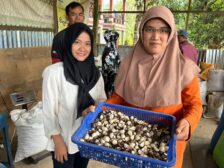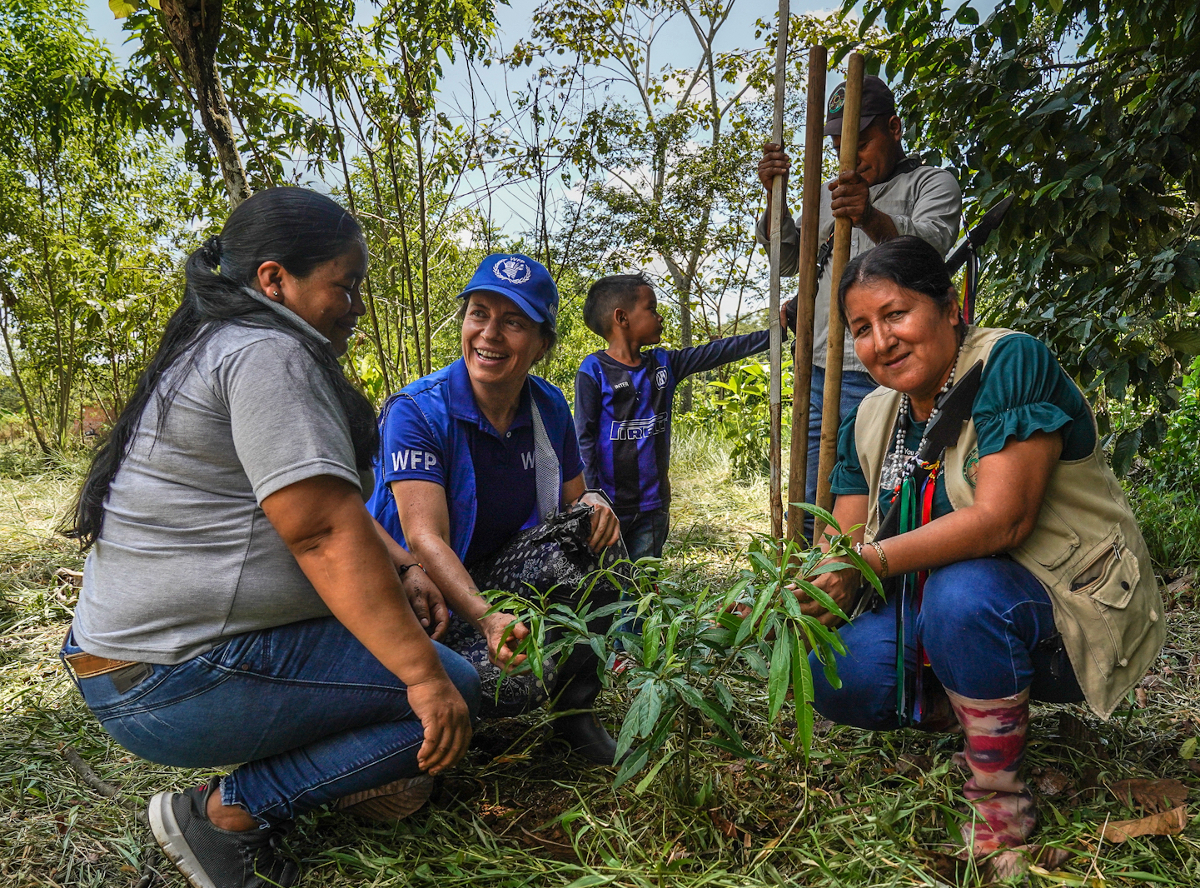In 2007, a majority of member states at the United Nations signed the Declaration on the Rights of Indigenous Peoples. It was an historic occasion, giving voice to millions of people whose connection to their lands often dates back millennia.
The declaration is thorough in its recognition of Indigenous peoples’ fundamental freedoms, stating that they have “the right to the conservation and protection of the environment and the productive capacity of their lands or territories and resources”.
The importance and value that Indigenous peoples bring to tackling climate change is essential. Local communities should be at the heart of how to solve the climate crisis not only because they are at risk. Their connection to place provides unique insights into how to adapt to increasingly frequent extreme weather events. They have been the custodians of their land and water for generations – and the knowledge that brings is priceless.
The Adaptation Fund has financed multiple projects around the world where Indigenous peoples are being impacted by climate change. This offers the Fund unique opportunities to explore how climate adaptation can be implemented in lockstep with Indigenous knowledge.
Restoring forest
One such opportunity comes from a project that faced challenging circumstances in the deep jungle between Ecuador and Colombia. The project, implemented by the World Food Programme (WFP), covers an area of over 915,000 hectares and two watersheds important to both countries.
The region’s Afro and Awá communities live in precarious conditions there, affected by extreme weather events including drought, floods and storm surges. This border area is one of the most food-insecure regions in Latin America. Changes in climatic conditions have meant loss of mangrove forests, unstable crop production and a decline in fish species. This is having a knock-on effect on people’s diet, and malnutrition is increasing.
To address these issues, WFP worked closely with communities to raise awareness of climate risks and incorporated ancestral knowledge into adaptation measures. Restoring over 8,000 hectares of forest helped the livelihoods of 120 communities and 1,100 families in the region. In addition, the creation of resilient family gardens using organic products has helped to improve the diet of a further 600 families.
Using these techniques, alongside other activities such as sustainable agroforestry, helped to protect against damage from heavy rains. At each step, WFP has worked with communities imparting their knowledge and sought to empower local people. This included greater representation for women who, given historic inequalities, are more exposed to climate-related risks.
Local knowledge
The project faced unique challenges: the partners had to navigate working across borders in a large and remote region where there are serious security concerns. Diego Guzmán, the WFP’s national programme officer for food systems and climate change, worked closely on the project. He told Climate Home that the team maintained a line of communication to the UN’s security unit in Ecuador. “We actively engaged local organisations and leaders, leveraging their intimate knowledge of the territory,” he said. This solved some of the additional obstacles of size and borders.
Improving food security and its relationship to climate change among the community was one of the key components of the project. This first meant understanding and respecting traditional norms. “It’s crucial to acknowledge and value the local products that hold significance within these communities, fostering sustainable use of resources for improved food security and economic well-being,” said Guzmán. One of the key lessons from the project – and others like it – is to strengthen how local organizations work. Decisions need to be “inclusive, transparent, and reflective of the community’s priorities,” he added.
It is the sense of mutual respect and a shared end goal that supports the success of these projects. The Fund has also seen other significant components aimed at restoring sustainable ancestral practices in projects it funds in Morocco (reviving ancient underground water channels to address drought), Costa Rica (diversified forest farming to enhance food security), and Mexico (adapted fog catchers to store water), among others.

Local women in South Sulawesi, Indonesia, taking part in an
adaptation project seeking to diversify food and livelihood security.
Photo credit: Adaptation Fund
Diversifying incomes
Mikko Ollikainen, head of the Adaptation Fund, said the organisation “takes great pride in supporting and empowering the most vulnerable local communities and groups, and you see this across many of our projects on the ground”.
“Our five-year medium-term strategy and environmental and social safeguards further foster support of human rights and equitable opportunity, including for Indigenous communities, which very often have the best ideas of what works well locally in building climate resilience,” he explained.
Another related Indigenous project comes from the other side of the world, on the Indonesian island of Sulawesi in South Sulawesi province. It aimed to raise awareness of watershed and climate impacts among the Indigenous people of Ammatoa Kajang. The implementing entity was Kemitraan, or the Partnership for Governance Reform in Indonesia, a non-profit established in the country for the past two decades.
Here the challenge was to reduce climate-related vulnerabilities through improving how the watershed was managed. This included the creation of different social business groups to help people diversify incomes, selling existing products like candlenuts in more profitable ways, and upgrading crop machinery. Not only did this approach require a climate adaptation plan based on local knowledge, but active lobbying of the regional government to see it implemented over the long-term. Again, strengthening local governance was seen as key.
A shift in thinking
One of the project participants, Namesiah Munaati, told the Adaptation Fund: “What has changed is the mindset of the community – a shift in thinking, from farming practices to managing agricultural products and marketing strategies.”
“There has been an improvement in our family finances. There is enough for children’s allowances and our household needs are met,” she added.
It’s no secret that outside entities have not always acted with local concerns in mind when developing plans and projects designed to support people on the ground. As Indigenous rights have grown in prominence, so has awareness among external partners. There is now recognition that working in partnership with Indigenous people will empower and protect their unique cultures to face new threats including climate change, ensuring their survival for decades to come.
Sponsored by the Adaptation Fund. See our supporters page for what this means.
Adam Wentworth is a freelance writer based in Brighton, UK.
